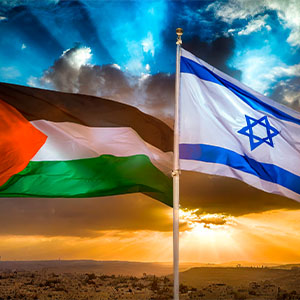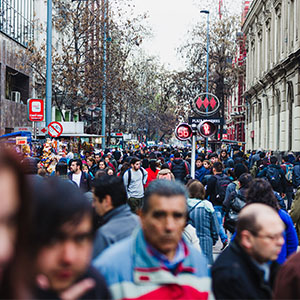“Regarding non-proliferation, the NPT is a glass that is half full or half empty. Today we have nine nuclear powers, four more than in 1970 (when it came into force), but there could have been many more.”
Raul Jungmann, former minister of Defense and current extraordinary minister of National Security
“The NPT was always an unbalanced tripod, but indispensable for world security. Its original sins will only be made good with the complete disarmament of all countries.”
Ambassador Marcos Azambuja, former secretary-general of Itamaraty and former head of the Brazilian Delegation to Disarmament and Human Rights Affairs, in Geneva
“In recent decades, the USA and Russia have reduced (their arsenals) quantitatively, but in qualitative terms a new nuclear weapons race is taking place between the two main powers.”
Leonam Guimarães, president of Eletrobrás Nuclear
“When I decided to sign the NPT in 1998, Brazil and Argentina had already opted to avoid a nuclear race in the Southern Cone and created an agency for the reciprocal monitoring of their peaceful nuclear programs. We were pioneers and are an example for the world.”
Fernando Henrique Cardoso, former president of Brazil (1995-2002)
“The belated signature of the NPT by Brazil coincided with a historical divestment in our nuclear program for peaceful purposes, both in terms of technology and human resources.”
General Sérgio Etchegoyen, head minister of Institutional Security of the Presidency of the Republic of Brazil
“I would like to point out how improbable it is for a presidential foundation to organize a seminar to debate such a significant decision as Brazil’s adhesion to the treaty 20 years ago, and in the presence of the person responsible for it, invite dissonant voices to discuss the question openly and transparently.”
Matias Spektor, of the Fundação Getulio Vargas International Relations Center
The phrases above summarize the main points of the seminar “50 Years of the Treaty on the Non-Proliferation of Nuclear Arms: Impasses and perspectives”, held at the beginning of March by the Fundação FHC, IBED (Brazilian Institute for Defense Studies) and the ministries of Defense and Foreign Relations. The event, which lasted a full day, was attended by representatives of the armed forces, diplomats, ministers, specialists in international security, as well as Brazilian and Argentinean researchers.
Upon completing 50 years, the NPT has had relative success in one of the bases of its tripod, that of non-proliferation, but with respect to the other two bases – disarmament of the five nuclear powers in existence before 1967 (USA, Russia, China, United Kingdom and France, who possess 90% of the nuclear weapons in existence) and the inalienable right of countries to develop nuclear programs with peaceful aims – the results are negative or frustrating.
According to the specialists in attendance, the world is currently experiencing a new nuclear weapons race between the main powers, who have significantly reduced the number of nuclear warheads, but have developed extremely fast and accurate missiles that have the capacity to reach the enemy much more efficiently. And they possess a new class of tactical nuclear weapons that may be used against limited targets or on the battlefield. “This is very frightening, because nobody will survive a nuclear war, everyone will be destroyed”, said the engineer Leonam Guimarães (read more below).
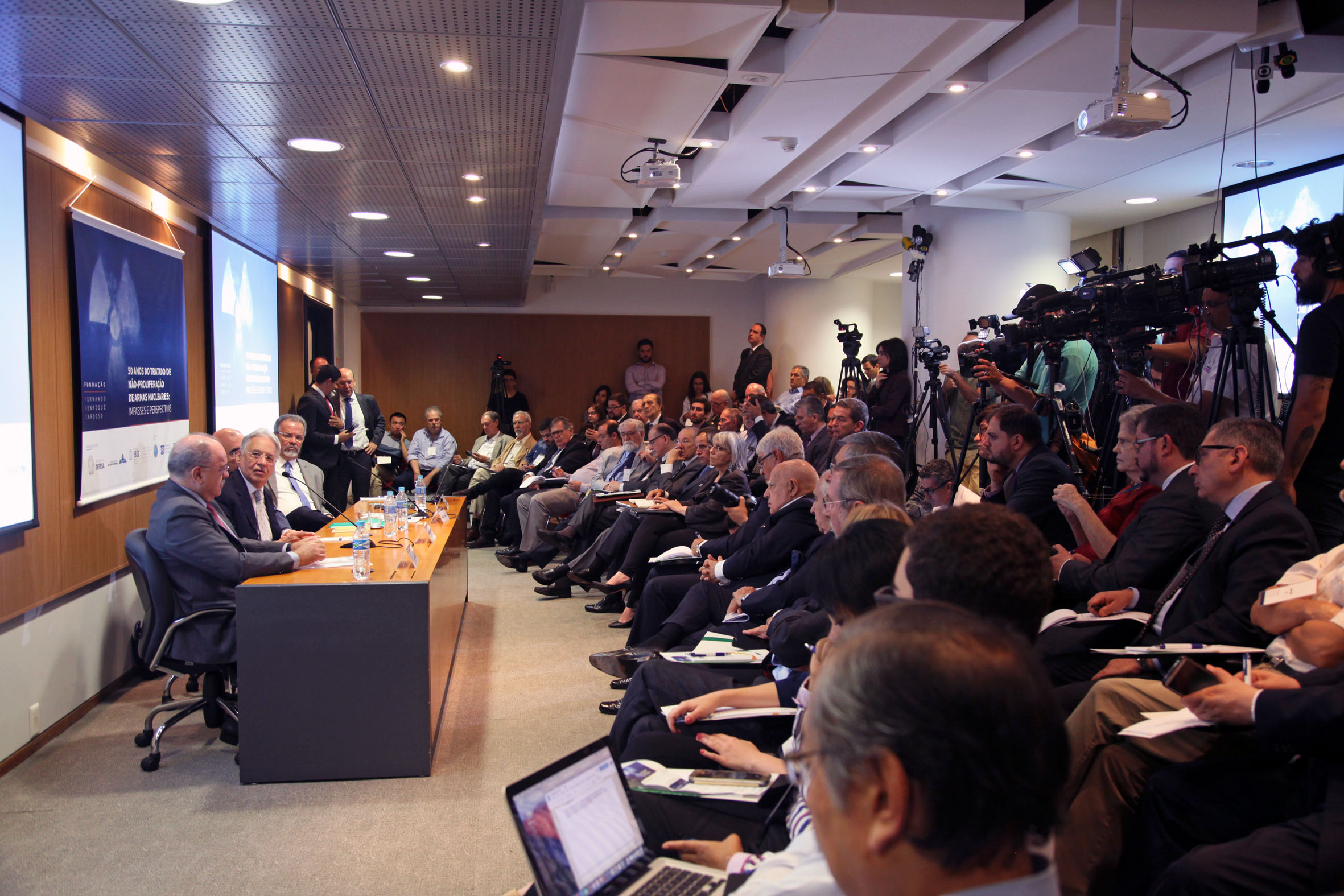
Nuclear ‘status quo’
“Because it had no efficient mechanism to guarantee the disarmament of the countries that already had these arms, the NPT froze the status quo (of global nuclear power)”, said army general Sérgio Etchegoyen, chief minister for Institutional Security of the Presidency of the Republic of Brazil.
“And what did Brazil get besides a photograph alongside the well-behaved nations? Although in 1998, when we joined the NPT, we had already acquired theoretical and practical mastery of the entire nuclear fuel cycle (from the extraction to the enrichment of uranium) and we had highly qualified technical human resources, since then investments in the nuclear area and in our program with peaceful ends, including nuclear medicine, have been reduced and little progress has been made”, he stated.
“If the NPT had not been created in 1968, today we would not have nine countries with nuclear capacity, but at least 40. It is bad with the NPT, but would be much worse without it”, said Marco Marzo, secretary-general of the ABACC (Brazilian-Argentine Agency for Accounting and Control of Nuclear Materials ), created in 1991.
In addition to the five countries that already had nuclear weapons when the NPT was created, Israel, India and Pakistan, which never joined the treaty, have become nuclear since then, the two former with the approval (albeit not explicit) of some of the leading powers. South Africa, at that time under ‘apartheid’, actually produced a small number of nuclear bombs. However, it gave up its program in 1989 as part of its efforts to put an end to international isolation and overcome the regime of racial segregation (ended in 1994).
Whereas Iran, accused by the USA and Israel, among others, of having a bellicose nuclear program, in 2015 signed an agreement with the five members of the UN Security Council, Germany and the European Union, whereby it committed to limiting its program to peaceful purposes and permitted broad-based monitoring of its installations. In spite of the current US president Donald Trump’s threat to break the agreement, it remains in force (in May 8th 2018, Trump announced the US ‘withdrawal’ from Iran nuclear deal and the reinstatement of sanctions on the regime).
Other countries, such as Libya and Iraq, have been accused of having weapons-oriented nuclear programs, but suffered retaliations in the form of economic sanctions or military interventions, and currently no longer represent a nuclear threat.
One of the most closed countries in the world and one that is subject to severe international sanctions, North Korea is a unique case. It joined the NPT in 1985 but withdrew in 2003 and in recent years has carried out a number of tests with nuclear bombs (the latest in 2016). Currently the country is considered to be a nuclear power and is engaged in a showdown with the USA and other nations. After mutual threats of attack, recently the North Korean leader Kim Jong-un invited Trump to a summit meeting which should take place shortly, with results that are difficult to foresee.
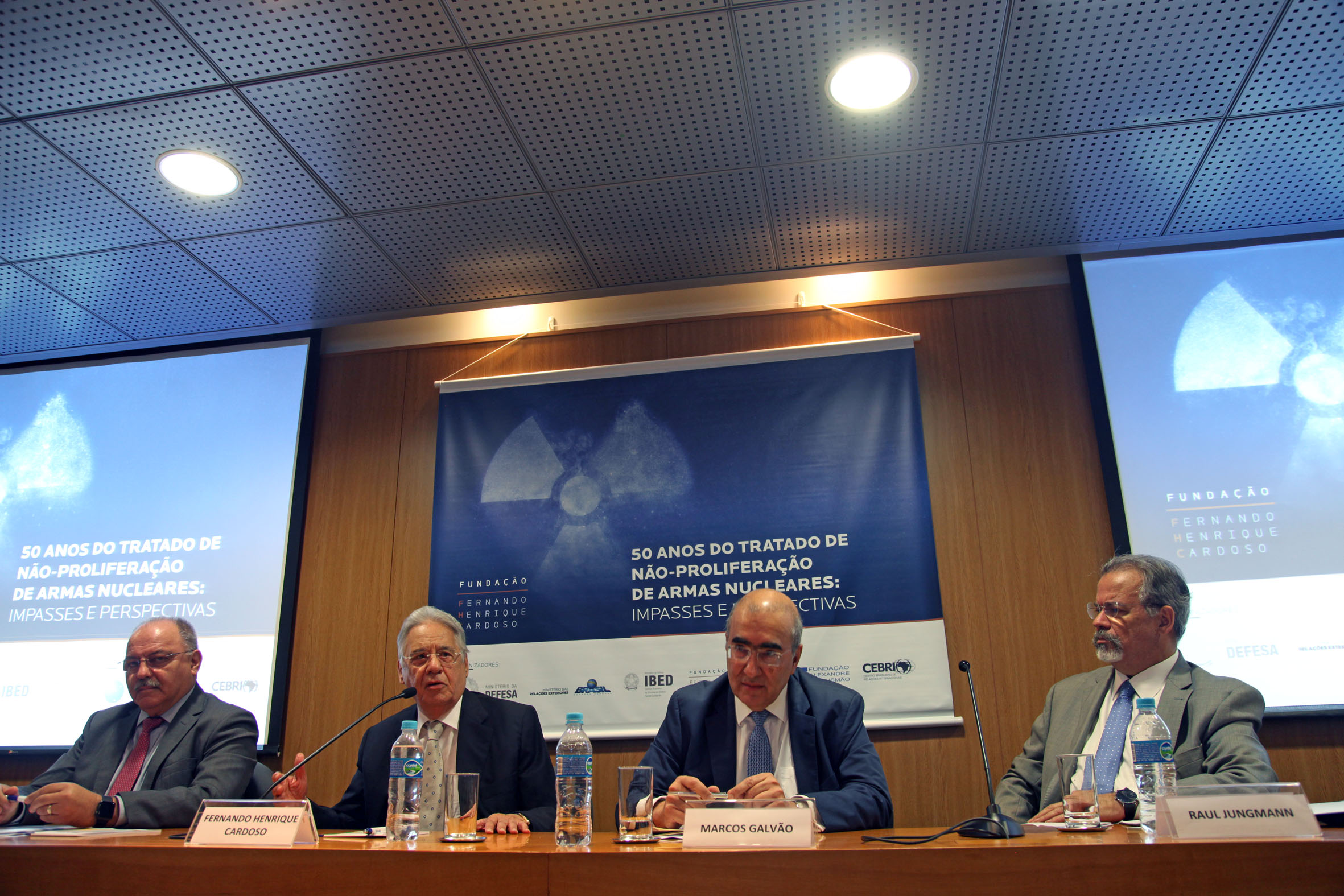
Recalling Brazil’s adhesion
“When, after a broad-based debate within the government, the then president Fernando Henrique decided to sign the NPT (in 1998, 30 years after it was created), he underscored the discriminatory nature of the treaty, but, at the suggestion of Luiz Felipe Lampreia, (1941-2016), at that time minister of Foreign Affairs, he opted for Brazil’s constructive engagement with the rules of the NPT”, recalled Raul Jungmann, who has just left the Ministry of Defense to take over the new Extraordinary Ministry of National Security.
“Regarding disarmament, there can be no doubt that due to deficiencies in global governance, the achievements of the NPT were only partial, because the reduction in number from around 60,000 warheads to the current 15,000 was not a direct consequence of the NPT, but rather was due to bilateral agreements between the USA and the Soviet Union/Russia (SALT I and II and START I and II, during the final phase of the Cold War). The NPT did not achieve the desired level of global security”, said Jungmann, who occupied diverse posts during the FHC government, including that of minister of Agricultural Development.
According to the minister, there is also asymmetry regarding the third base of the tripod, which guarantees countries’ rights to develop peaceful nuclear programs. An example of this is the difficulties the Brazilian Navy has faced in developing the Brazilian nuclear powered submarine, a program without precedent worldwide. “The nuclear directorate (group comprising the nuclear powers) seeks to make the appropriation of technology as difficult as possible, even when all of the safeguards have been respected, as is the case with Brazil”, he concluded.
“I feel comfortable in saying that Brazil’s decision to adhere to the NPT, in which I participated, occurred as a logical sequence to the understanding reached with Argentina and the efforts to consolidate Latin America as a nuclear weapon free zone”, said Celso Lafer, who was minister of Foreign Relations in 1992 and from 2001 to 2002, as well as Brazil’s ambassador to the UNO.
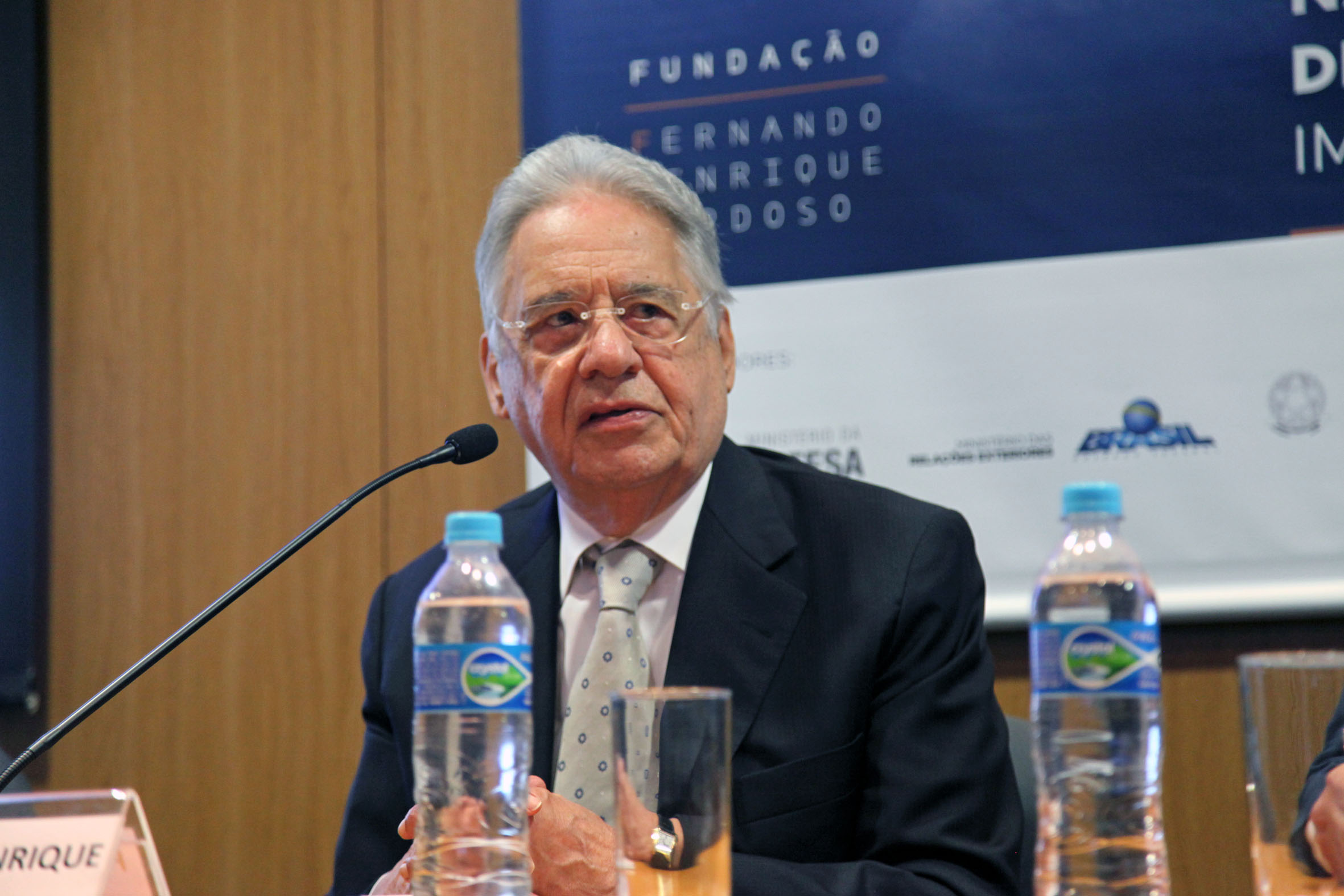
Present at the opening of the seminar, the former president Fernando Henrique underscored how important it is for Brazil to be attentive to what is happening with nuclear arms on a global level. “Brazil’s adhesion to the NPT, which consolidated the country’s decision to maintain its nuclear program only for pacific purposes, is in accordance with national interests. But we live in a complex world and, 50 years after its creation, the treaty should be subject to broad debate and should be improved, with a contribution from Brazil”, FHC stated.
“It is not every day that you can see several ministers, former ministers and a former president sitting down around a table to debate a subject which in most countries attracts only the initiated”, was the comment made by the Argentinean ambassador Rafael Grossi, who represents his country at the IAEA (International Atomic Energy Agency) and the CTBTO (Comprehensive Nuclear-Test-Ban Treaty Organization).
“I would like to point out how improbable it is for a presidential foundation to organize a seminar to debate such a significant decision as Brazil’s adhesion to the treaty 20 years ago, and in the presence of the person responsible for it, invite dissonant voices to discuss the question openly and transparently. I congratulate everyone involved in this initiative”, said professor Matias Spektor, of the Fundação Getulio Vargas International Relations Center.
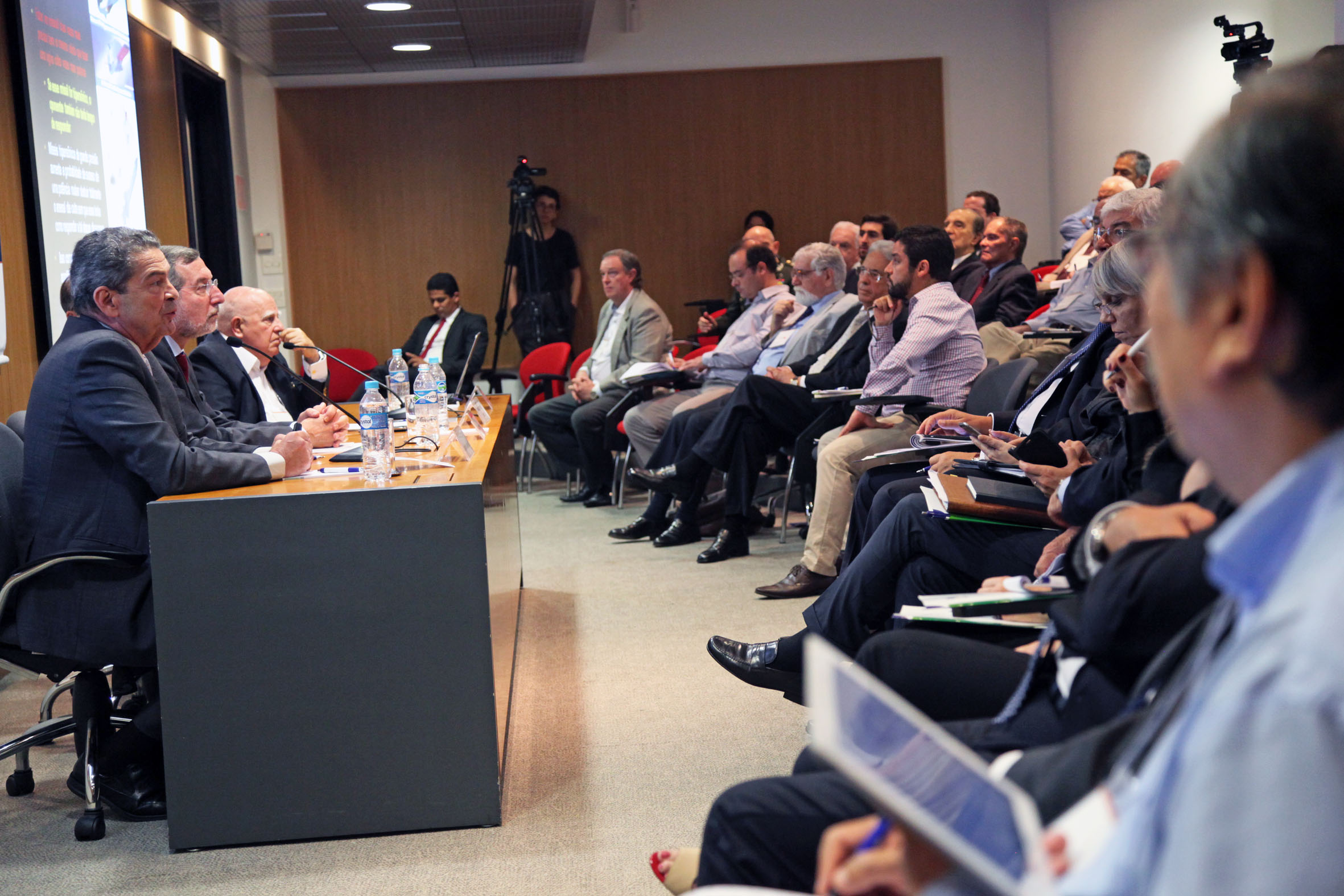
New nuclear arms race
According to diverse specialists in attendance, today the world is experiencing a new nuclear arms race which involves principally the USA, Russia and China, in addition to the obvious threat posed by North Korea. “In recent decades, there has been a quantitative reduction in nuclear arms, but the modernization programs proceed at full steam ahead”, warned Leonam Guimarães, president of Eletrobrás Nuclear.
“Both Russia and the USA are investing heavily in hypersonic precision missiles, capable of transporting warheads with such speed and precision that their adversary would not have time to react. The faster, more precise and more undetectable the missile, the less powerful the nuclear warhead it carries needs to be”, Guimarães explained. According to this engineer, the main powers are also investing in low-yield nuclear arms that can be used tactically and on the battlefield (see the detailed presentation in the section Conteúdos Relacionados, on the right hand side of this page).
At the beginning of February, the North American Department of Defense released its 2018 ‘Nuclear Posture Review’, in which it admits that the USA could use low-yield nuclear artifacts in response to “significant non-nuclear strategic attacks” to defend “interests vital to the USA, its allies and partners” (read summary). According to the Brookings Institution think tank, one of the most important in the USA, the revision of North American nuclear policy, now under Trump’s command, represents an about turn in relation to the Obama government’s (2009-2017) policy.
A few weeks later, in the beginning of March, in a speech on television the Russian president Vladimir Putin announced that Russia is developing a new line of strategic nuclear weapons that could reach targets in the United States before that country would have time to defend itself. The novelties include a high precision hypersonic missile and underwater drones capable of carrying nuclear warheads. See report in the British newspaper the “The Guardian”.
Guimarães warned of the possibility of missiles carrying a combination of nuclear and non-nuclear warheads aimed at multiple targets: “If the adversary is not sure about what each missile is carrying, it could decide on a nuclear counter-strike, which makes the world a much more dangerous place.”
Also China, which previously only had a nuclear arsenal for dissuasive purposes, is beginning to develop an offensive arsenal, which represents a threat not only to the USA, but also to its neighbor India, which will not just accept this situation passively, not to mention Pakistan (India’s historical adversary). “It is necessary to remember that Pakistan is not a very peaceful place, and tactical arms could find their way into the hands of terrorist groups”, said Guimarães, who stated that he is not very optimistic.
“The world is heading towards unilateralism and questions of security, just like diplomatic negotiations, are multidimensional. We do not know what the impact of the growing unilateralism of Trump and other world leaders will be in the future”, said the Argentinean Irma Arguello, representative of the NPS Global Foundation. Among the examples of unilateral measures, the specialist cited the US threat to withdraw from the Iran agreement (not yet concretized) and the recognition of Jerusalem as the capital of Israel. Read about the seminar Global gridlock: how to overcome the crisis in international institutions?.
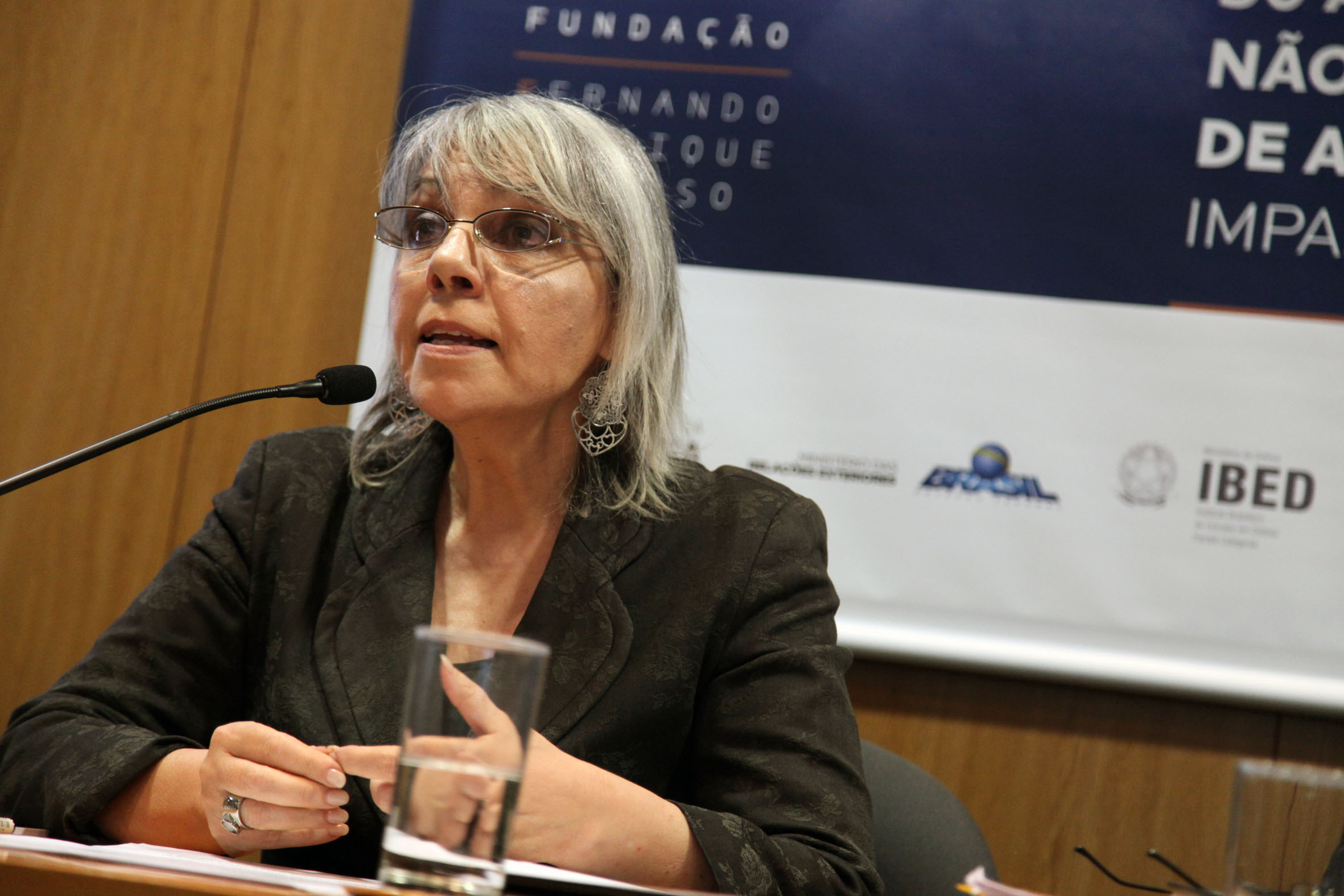
Arguello criticized the Treaty on the Prohibition of Nuclear Weapons (TPNW), adopted by the United Nations (UNO) Conference in July 2017, with support from 122 countries and which will only come into force after it has been ratified by 50 countries. The USA, Russia and the other nuclear powers, as well as a number of their allies, did not participate in the negotiations. Brazil signed the new treaty last year, but has not ratified it yet.
“None of the nine countries that have nuclear arms are going to disarm, on the contrary, they are modernizing their arsenals. This is why I am doubtful about the effectiveness of this new treaty. It seems more reasonable to preserve the current NPT and try to advance by means of coalitions based on topics, such as diminishing the risk of nuclear terrorism, protecting installations and nuclear waste”, she said.
“The TPNW could heighten tensions and prove to be counter-productive. The best way forward is to work on advances in the convention for the review of the NPT, which will take place in 2020”, said the retired ambassador Sérgio de Queiroz Duarte, former UN High Representative for Disarmament Affairs.
Cooperation between Brazil and Argentina
Most of the participants praised the example given by Brazil and Argentina since the end of the 1980s, when they opted to forgo the possibility of developing nuclear arms, to avoid setting off an arms race in the Southern Cone. The agreement was concluded during the governments of José Sarney (1985-1990) and Raúl Alfonsín (1983-1989) and resulted in the creation of the ABACC (Brazilian-Argentine Agency for Accounting and Control of Nuclear Materials ) in 1991.
A short while later, the ABACC signed an agreement with the IAEA (International Atomic Energy Agency) so that this UN body (headquartered in Vienna) could keep track of the mutual monitoring process of the two South American countries’ peaceful nuclear programs.
“When the agency was created, the international reaction was one of incredulity. Nobody believed that it would be worth anything. I myself was skeptical. At the ABACC inauguration ceremony in Buenos Aires, attended by the two Foreign Relations ministers at that time, Fernando Henrique Cardoso and Guido Di Tella, I joked that we were candidates for the Special Effects Oscar. Today, I can say with complete conviction that we deserved the Nobel Peace Prize”, said Marco Mazo, the ABACC secretary-general.
“In its 26 years of existence, more than 3,000 binational inspections have been undertaken in 75 facilities in both countries. We have highly qualified technical staff and state of the art analytical laboratories. This is an independent verification system, which receives financial and political support, but without any interference from either government in our activities. Brazil and Argentina are the countries with peaceful nuclear programs that have the most safeguards in the world, with the exception of Iran, which went overboard (with the signature of the agreement with the six global powers and the EU, in 2015)”, Mazo concluded.
“The international community never gave the Brazil-Argentina agreement the recognition it is due, but the treaty between the two countries is a global landmark and an example of how two countries can work cooperatively”, said ambassador Marcos Galvão, secretary-general of the Ministry of Foreign Relations.
“When we relinquished the possibility of a nuclear dispute (between our countries), Brazil and Argentina demonstrated great virtue and lucidity. We were not ingenuous, but rather realistic”, said Marcos Azambuja, who has been Brazil’s ambassador to France (1997-2003) and Argentina (1992-1997), secretary-general of Itamaraty (1990-1992) and head of the Brazilian delegation to the UN Office for Disarmament and Human Rights Affairs, in Geneva (1989-1990).
In addition to being a member of the NPT and having signed the TPNW (which still has to be ratified by the Brazilian Congress), Brazil is a signatory to diverse other multilateral agreements such as the Comprehensive Nuclear Test Ban Treaty and the Tlatelolco Treaty (in force since 1968 and ratified by all the countries in the region), which made Latin America and the Caribbean a nuclear-weapon-free zone.
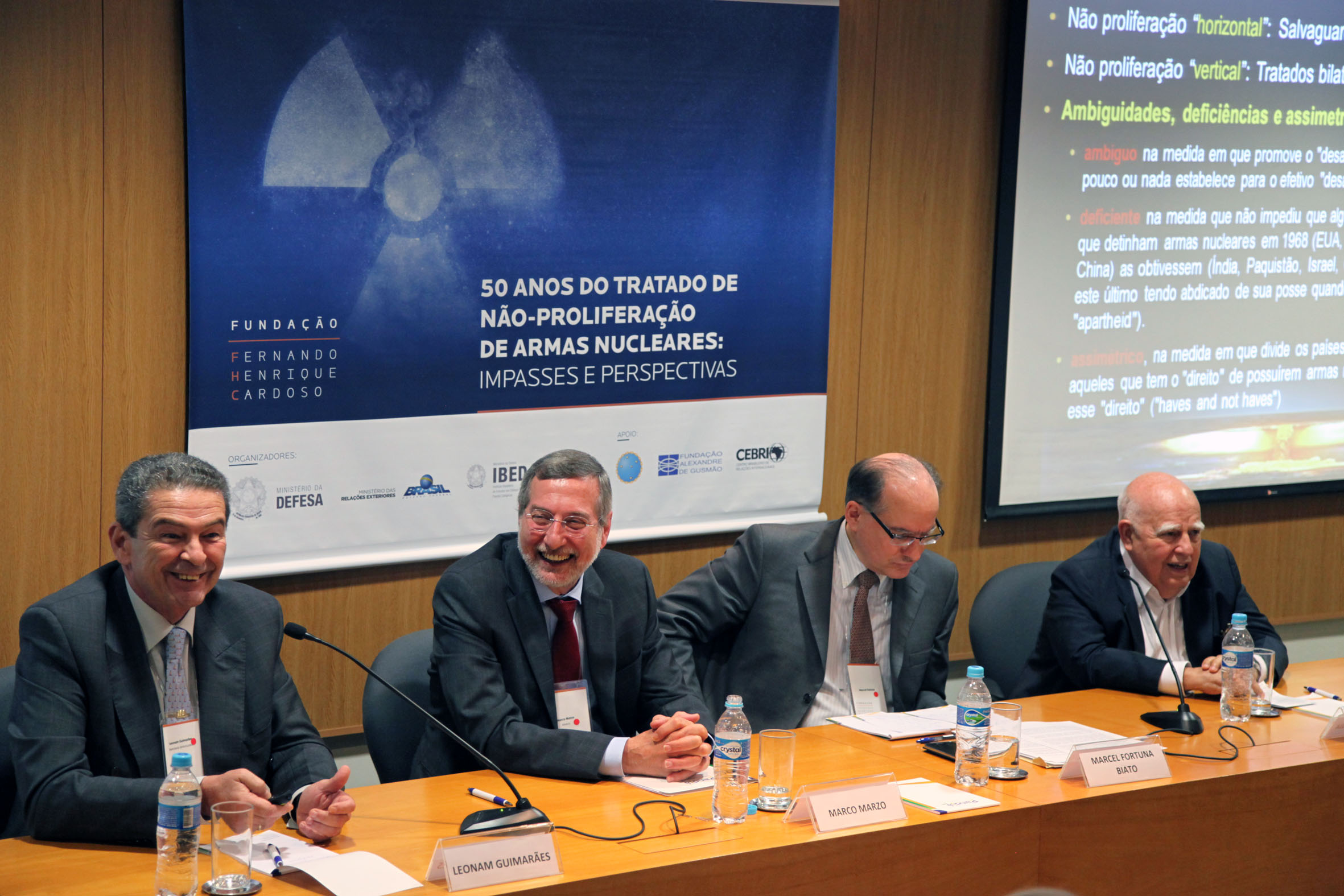
The 1988 Constitution (Chapter 2, article 21, XXIII, a) also explicitly states that “any nuclear activity in Brazilian territory will only be permitted for peaceful ends and with the approval of the National Congress”. “During the Constituent Assembly, in which I participated, there was a major debate about whether or not to include a clause prohibiting nuclear weapons in the Constitution. In the end, we decided we should and that is what was done”, FHC recalled.
Ambassador Marcel Fortuna Biato, Brazil’s representative to the IAEA, advocated the integration of the Brazilian nuclear program with global production chains. “The challenges are internal, because our nuclear industry reached an exceptional level, but was later practically abandoned. How can a country that is unable to finalize the Angra 3 nuclear plant possibly intend to build a nuclear submarine?”, he asked.
“Differently from Argentina, which oriented its nuclear program to selling technology around the world, we have always opted for isolation. It is time we redefined what autonomy is. How can we take better advantage of all the technology acquired to transform it into something commercially useful?”, he said.
His Argentinean colleague, Rafael Grossi, also his country’s representative to the IAEA, proposed that the two nations should join forces to become exporters of jointly developed nuclear reactors.
According to Matias Spektor, lecturer in International Relations at FGV, a new regulatory framework for the nuclear sector is required urgently. “We have highly qualified scientists and technicians and leading edge, autonomous technology, but our program is hindered by truncated governance. How can the private sector interact better with the public sector? How can we obtain external investment to help finalize Angra 3? How to adapt our projects in the nuclear area to the environmental protection system? All of these things need to be discussed and consolidated”, Spektor stated.
“The nuclear issue has always divided the left and the right in domestic politics, often with no empirical basis. Will we be able to overcome this?”, the FGV lecturer enquired.
Otávio Dias is a journalist specialized in international affairs. He was the correspondent for the Folha in London, editor of estadão.com.br and chief editor of the Huffington Post in Brazil.





